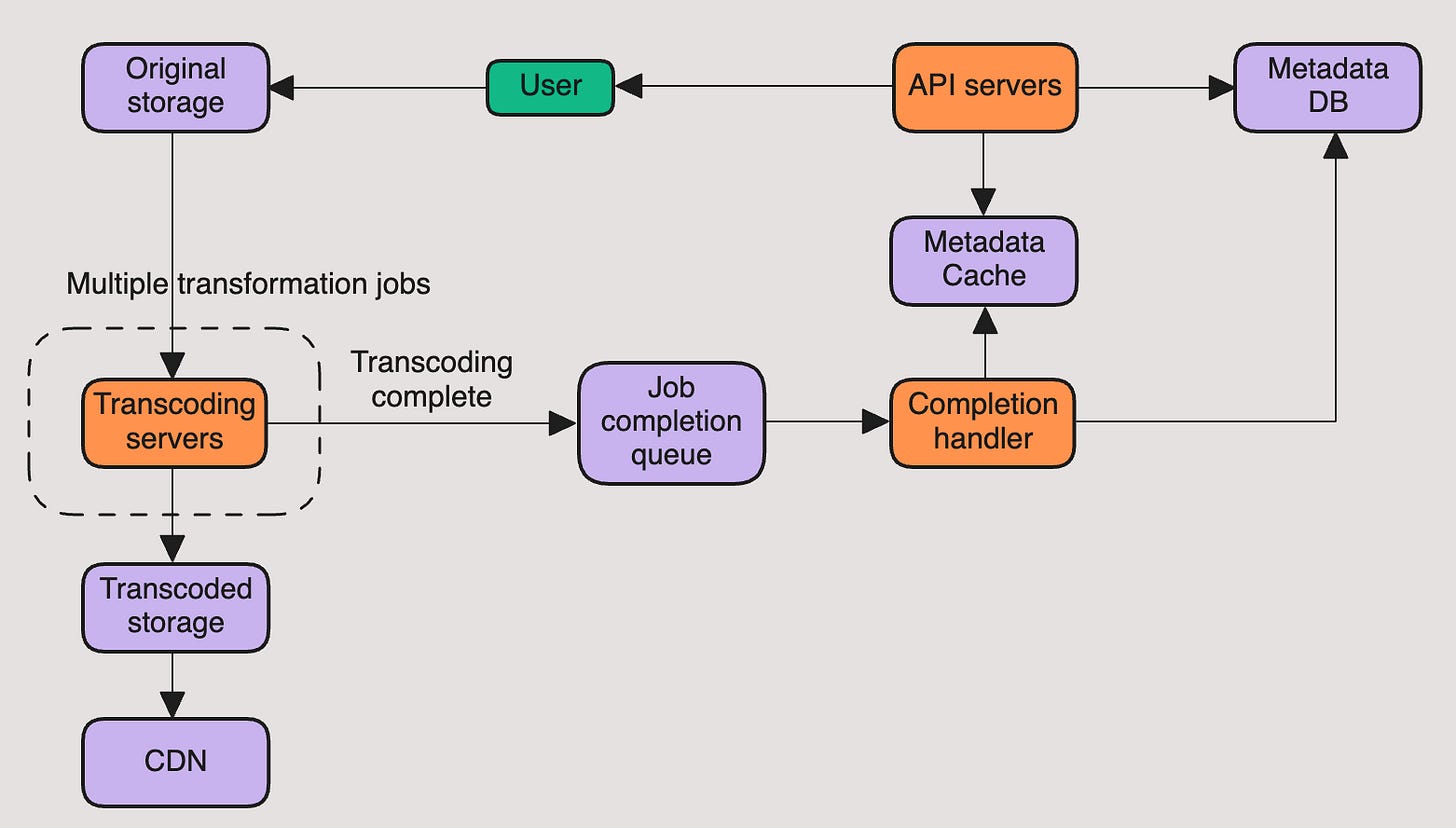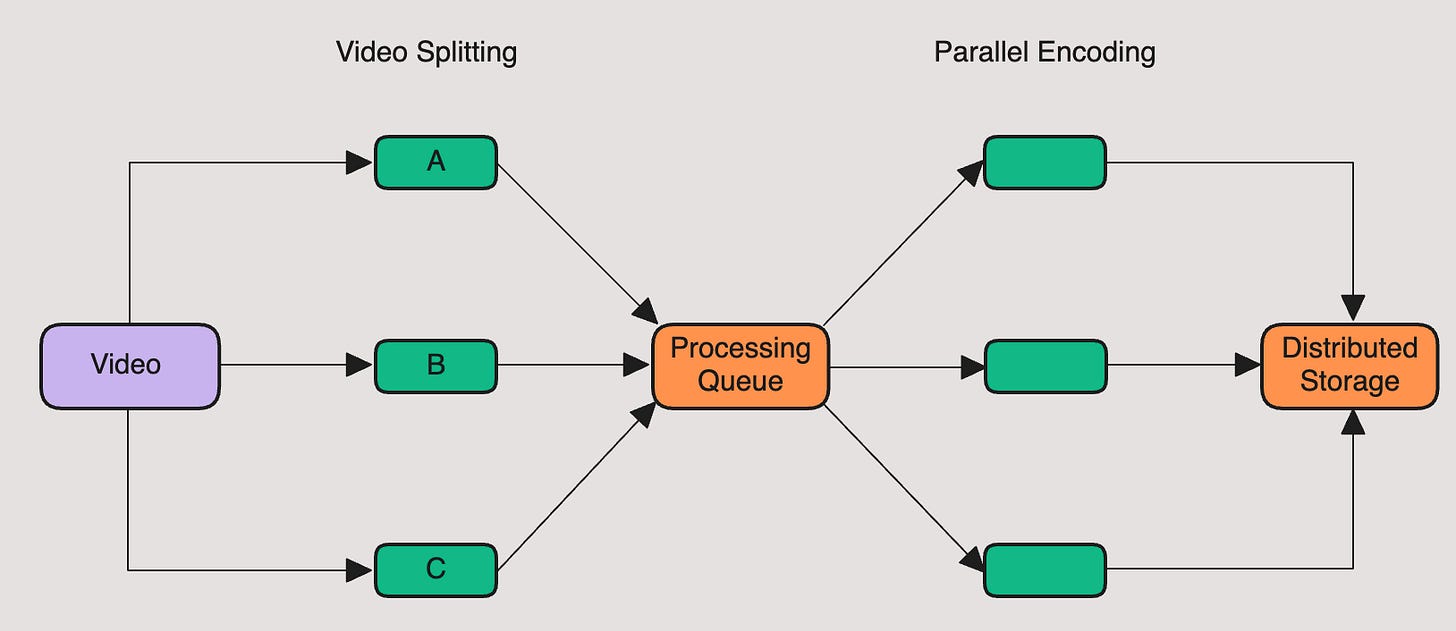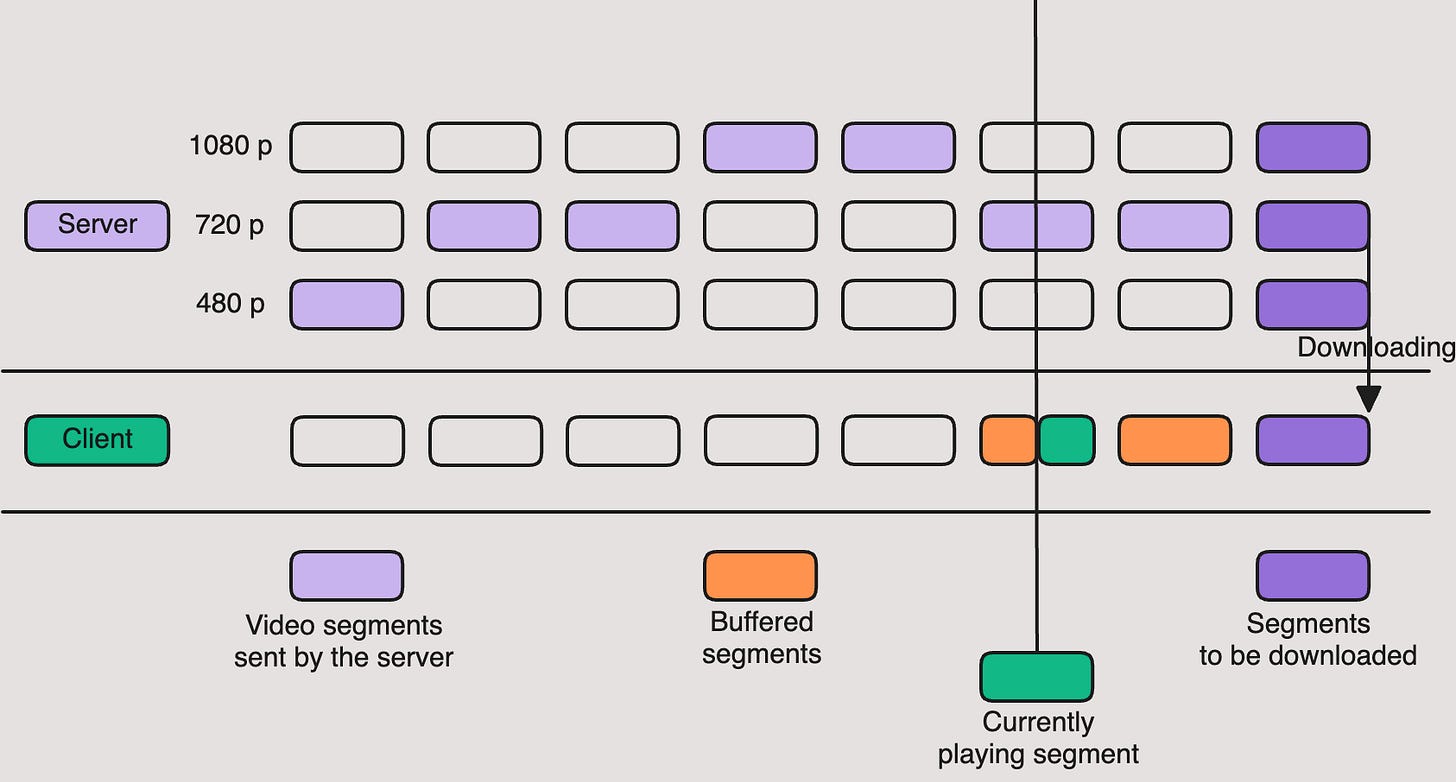Welcome to the 93 new subscribers who have joined us since last week.
If you aren’t subscribed yet, join 1000+ engineers and technical managers learning Advanced System Design.
Modern video streaming platforms like YouTube, Netflix, and Twitch serve millions of videos every day. Behind the scenes, there’s a complex system that ensures uploaded videos are processed correctly, stored efficiently, and delivered smoothly to viewers across the world.
A well-designed streaming platform typically has three key areas:
A publishing pipeline to handle uploads, storage, and CDN distribution.
An asynchronous video processing workflow that splits, transcodes, and enhances videos.
An adaptive bitrate playback system that ensures smooth streaming on all devices and networks.
Publishing Pipeline
When a creator uploads a video, it triggers a pipeline that prepares it for global distribution.
Original Video Storage
The first step is to store the raw uploaded video in a durable and scalable storage system, usually an object store like Amazon S3 or Google Cloud Storage. This original file is never served directly to users, but it serves as the master copy for all future processing. Keeping the original ensures the platform can reprocess the video later if new formats or higher-quality encodings are needed.Transcoding into Standard Formats
Uploaded videos come in different formats (MOV, AVI, MKV) and with different encodings. To make playback universal, the system transcodes these videos into standardized formats like MP4 or HLS/DASH segments. Multiple resolutions (240p, 480p, 720p, 1080p, 4K) are generated during this stage, so viewers can stream in the best quality their device and internet connection support.Uploading to CDN
After transcoding, the video is packaged into small chunks and metadata files, then distributed to a Content Delivery Network (CDN). A CDN caches video content in servers located around the world, reducing latency and ensuring smooth playback for viewers in different regions. Without a CDN, users far from the platform’s data centers would experience slow buffering.
This pipeline ensures that videos are safely stored, optimized for streaming, and distributed close to users.
Asynchronous Video Processing
Processing video is extremely compute-intensive, so it happens asynchronously in the background after upload. The user doesn’t wait for the video to finish processing before continuing — instead, the video becomes available once all processing steps are complete.
The pipeline usually includes:
Video Splitting
The uploaded video is divided into small segments (2–10 seconds). This segmentation is crucial for adaptive streaming, since players can switch between different video qualities segment by segment. It also allows processing tasks to run in parallel, improving scalability.Transcoding Across Multiple Bitrates
Each segment is transcoded into multiple resolutions and bitrates (low, medium, high). This ensures that the platform can serve different versions of the same video depending on device type and network conditions. For example, a mobile user on 3G might get a 240p version, while someone on fiber internet might get 1080p or 4K.
Additional Processing Stages
Beyond splitting and transcoding, platforms often include more stages in the async workflow:Thumbnail generation: Create preview images to display before playback.
Audio extraction & normalization: Ensure consistent sound levels across all videos.
Closed captions & subtitles: Improve accessibility and search.
Content moderation: Check for restricted or inappropriate content using AI or manual review.
Encryption & DRM packaging: Secure premium content against piracy.
By making these tasks asynchronous, the platform can handle huge numbers of uploads without overwhelming the system. Videos are queued for processing, and workers pick up jobs in parallel.
Adaptive Bitrate Streaming
Even after videos are processed, smooth playback depends on adapting to the user’s network. This is where adaptive bitrate streaming (ABR) comes in.
Multiple Quality Levels
Each video exists in different versions (low, medium, high quality). The player can choose the best version based on the user’s conditions.Dynamic Switching
The video player constantly measures bandwidth and device performance. If the user’s network slows down, the player automatically switches to a lower-resolution stream to avoid buffering. If the connection improves, it switches back up to higher quality.Segment-Based Streaming
Because videos are split into segments, the player can switch quality at the start of each new segment. This makes the transition seamless for the viewer.
Adaptive bitrate streaming is the secret to why modern platforms can deliver smooth video even over unstable mobile networks. Instead of pausing for buffering, the video keeps playing at the highest quality possible.
Check out a more detailed video coverage on my Youtube.
Thank you for your continued support of my newsletter and the growth to a 1k+ members community 🙏





